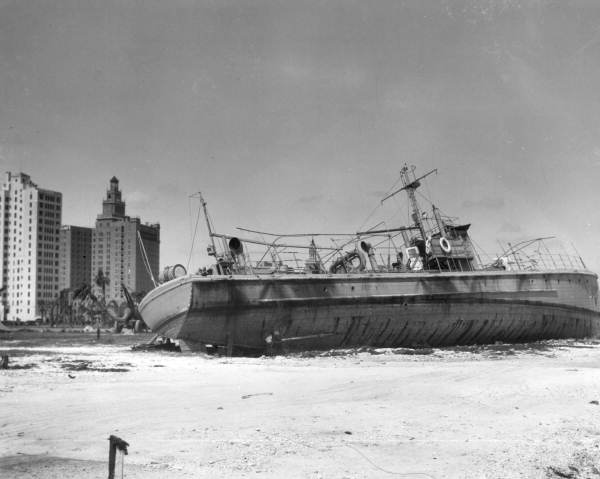
Hurricanes of the Early 1900s
ADVERTISEMENT
There has been a lot of news coverage lately about too much fresh water from Lake Okeechobee being directed into the estuary systems on both the east and west coasts of Florida. The water used to flow into the Everglades which reached all the way up to the Lake, but now is some distance south. The levies around Lake O were built to keep flooding like what happened after the 1928 hurricane from happening again, but they created the problem of water from the lake damaging the coastal ecosystems. You're darned if you do and darned if you don't.
Being from South Louisiana, I've heard tons of stories about hurricane Audrey, yet see no mention of it here. I remember my grandparents saying that most of the victims of this storm in the area of Holly Beach died from snakebites as opposed to drowning.
Another EXCELLENT book on the Galveston Storm is "A Weekend in September" by John Edward Weems, originally published in 1957. He interviewed survivors and tells their tale in a very vivid way. You finish the book truly feeling you were there. I live near Galveston and try to read it every anniversary of the storm.
Thank you Mary Beth another good book is fiction for the most part but written by John D MacDonald based on a true story it is called Condominium
Although called a "dry hurricane" Homestead took the eye an left fighter jets rolled over at the base. Homes sucked right off the ground. The complete town of Homestead was left in the dark without water until the our National Guard flew down US 1 landed and provide the town with gallons of water after 3 days. Homestead was the hardest hit from this storm.
God Bless America and all who attended us standing in the streets waving to the jets that we were alive! All forces came to assist and stayed for months to help us .
Hurricane Andrew damaged our homes and all items inside but it made us stronger.
my family was in this terrible hurricane they are outside of homestead maybe 1 mile they live in the perrine area. I was able to get that 1 phone call in to make sure they are ok. then last year I was stuck in Irma and Maria how devastating. looking tru the mailboxd slot seeing trees uprooted and flying. saw someone try to drive in tree fell on top of house and they had to flee water was every where,. to see coconuts and the clay roof shingles flying like a deck of cards.what an experience
I think the worst hurricane in my life time was katrina.
I've been through a lot of hurricanes and I remember them all from Ft. Walton Beach, Fl when I was young when we had to evacuate our beachfront house to being in WV when Camille came through to driving I-64 W from Richmond, Va during Ivan (Visibility was about 25 yards in a pouring rain), but the worst hurricane I've ever experienced was while I lived on Okinawa.
The eye of category 5 Typhoon Cathy was 10 miles off the coast and ran up the East side of the island (60 miles long and 7 miles wide at it's widest point) around the North side, down the West side, around the South side, and back up the East side again before going up to Tokyo and causing a great deal of damage to Tokyo. We were trapped in our house for a week and luckily all of the houses have heavy shutters and we had enough food and water stored up to last two weeks. Thank God for Coleman stoves.
Being from Fl, some friends and I made a bet that the Seminole and Miccosukee tribes probably hunkered down among the Palmettos to endure a hurricane. I don't know if you are familiar with Palmettos, but they grow very thick.
The plan was to wait until a hurricane was forecast to come through the Orlando area and two of us would camp in two tents in a very thick Palmetto thicket so that nobody could say that I didn't do it.
Our tents sloughed off a lot of rain and we could see that the tops of the Palmettos were whipping pretty badly in a category two hurricane, but we felt very little wind at ground level with no damage to us or our tents.
A few weeks later, we got a chance to do it again, same place, same experiences, same type of category two hurricane with one exception, the wind broke an old dead pine tree and flung it to within 4 feet to the right of my tent from about 50 yards away.
I proved my point not once, but twice and we decided that the pine tree proved that even category two hurricanes are dangerous and that I'd never do something like that again.
What a terrific story. Thank you for sharing it.
All great stories and ones that should be repeated yearly!! Some people believe, "it won't happen here" or to them.
I don't live near any weather related annual weather event areas, but I do live on and near earthquake faults. I save water and have stored food "just in case", then; there's the SHTF scenario. It's comforting to be prepared.












